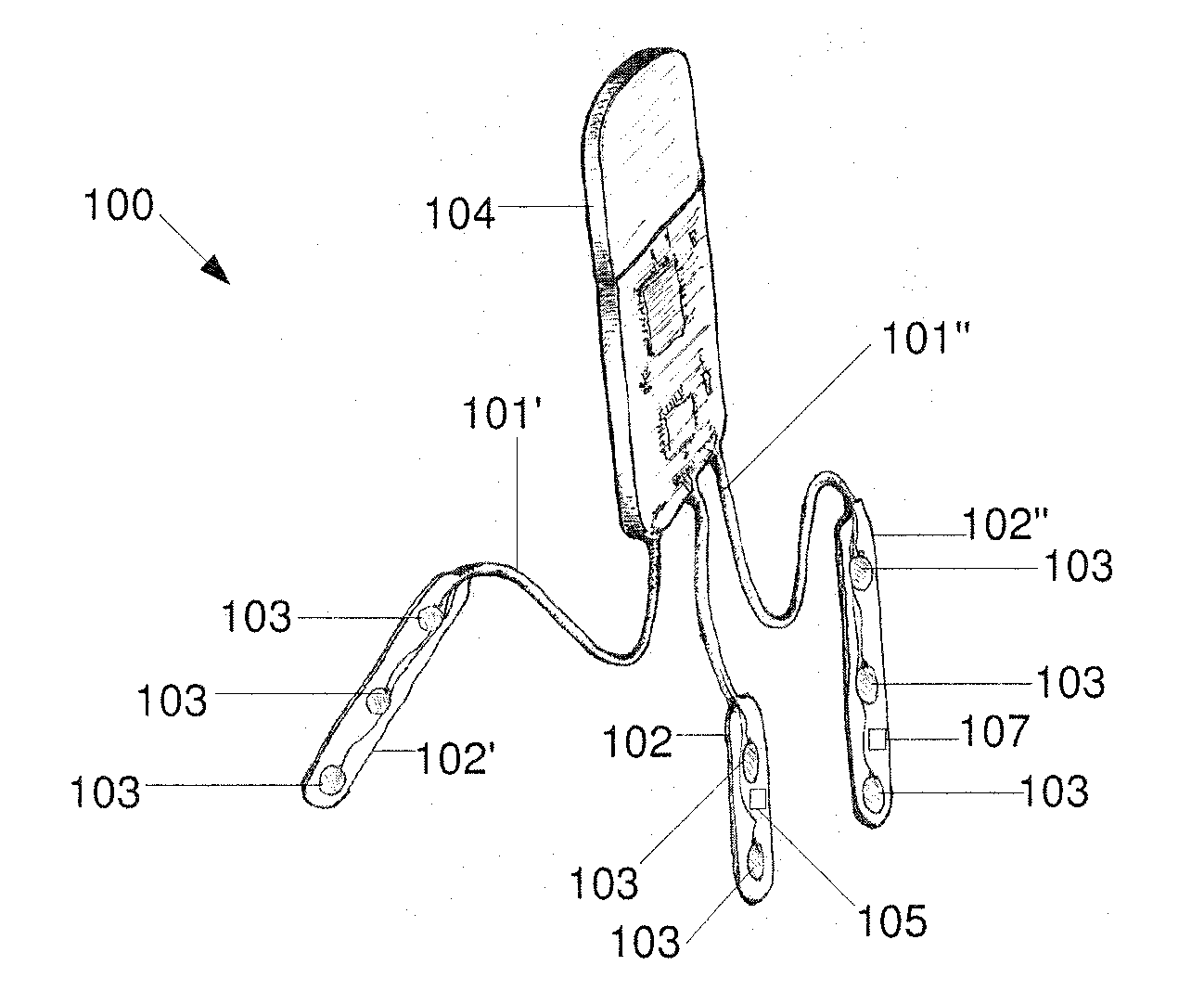Minimally Invasive Subgaleal Extra-Cranial Electroencephalography (EEG) Monitoring Device
a monitoring device and subgaleal technology, applied in the field of minimally invasive subgaleal extracranial electroencephalography (eeg) monitoring devices, can solve the problems of inpatient video eeg studies, high cost, and inability to detect brain electrical activity, and achieve the effect of facilitating the detection of brain electrical activity
- Summary
- Abstract
- Description
- Claims
- Application Information
AI Technical Summary
Benefits of technology
Problems solved by technology
Method used
Image
Examples
example i
[0036]The exemplary device 100 may be implanted in a subgaleal region of a patient, near the brain, as shown in FIG. 11. As can be seen, at least one contact 103 (e.g., an electrode for recording electrophysiological data, particularly EEG data) of the device may be implanted in a subgaleal region that is between the skull 14 and the scalp 16 of the patient near the brain 12 of the patient. Specifically, the at least one contact 103 or electrode arrays 102, 102′, 102″ of the device 100 may be position perpendicular to a cranial vertex 18 of the patient. More particularly, the at least one contact 103 or electrode arrays 102, 102′, 102″ of the device 100 may lie across a mid-length of the patient's skull 14. It is contemplated that the exemplary device 200 may be alternatively implanted in the subgaleal region of the patient in the same manner described above and as shown in FIG. 11.
[0037]The device 100, 200 may be used to record EEG data from the patient extracranially without drill...
PUM
 Login to View More
Login to View More Abstract
Description
Claims
Application Information
 Login to View More
Login to View More - R&D
- Intellectual Property
- Life Sciences
- Materials
- Tech Scout
- Unparalleled Data Quality
- Higher Quality Content
- 60% Fewer Hallucinations
Browse by: Latest US Patents, China's latest patents, Technical Efficacy Thesaurus, Application Domain, Technology Topic, Popular Technical Reports.
© 2025 PatSnap. All rights reserved.Legal|Privacy policy|Modern Slavery Act Transparency Statement|Sitemap|About US| Contact US: help@patsnap.com



